Let's Make it (Email) Official
Become an AuthenTEAK Insider and be first to know about new collections, exclusive sales, and special offers.
Let's Make it (Email) Official
Become an AuthenTEAK Insider and be first to know about new collections, exclusive sales, and special offers.

The right patio heater is essential when it comes to enjoying the outdoors (comfortably) throughout the seasons. From cozy courtyards to larger commercial spaces, patio heaters are one of the best ways to heat your patio and have the power to transform an outdoor area into a year-round oasis. Before you make a purchase, consult our patio heater buying guide, which goes through our most frequently asked questions and need-to-know details.

When it comes time to buy a patio heater, the fuel type you choose will depend on your environment, budget, and proximity to utility hookups. Download our chart of what you need to know about electric vs. gas:
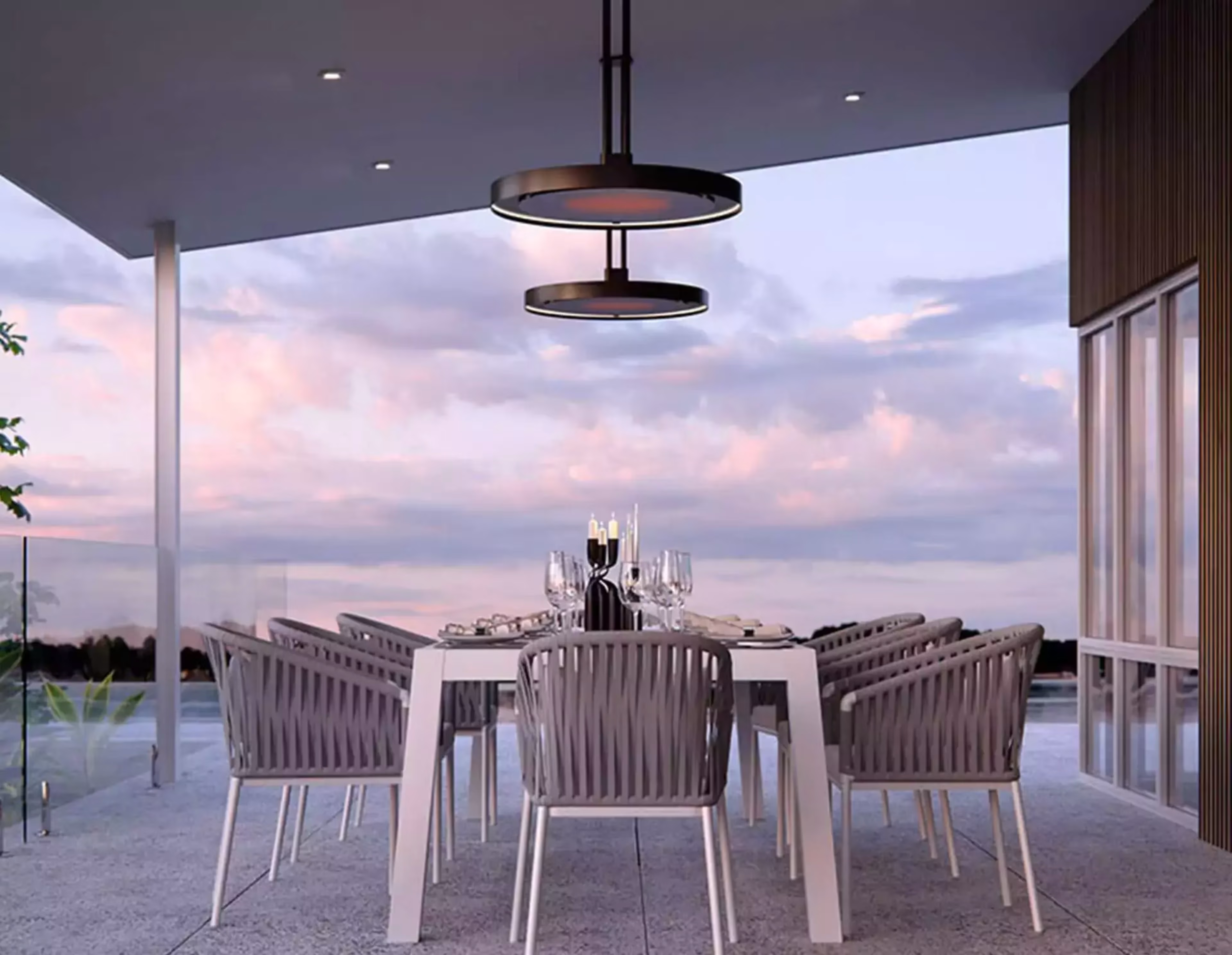
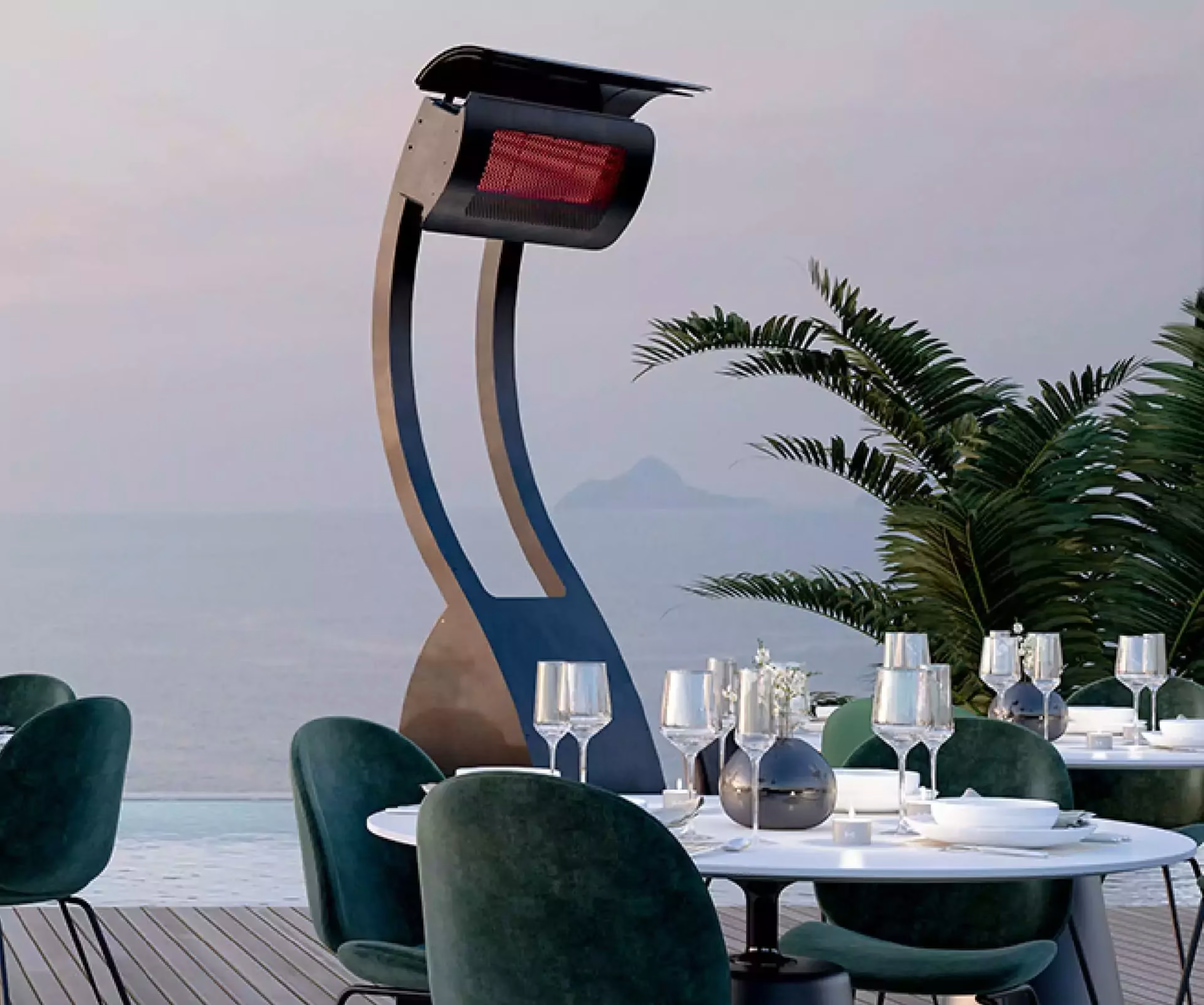
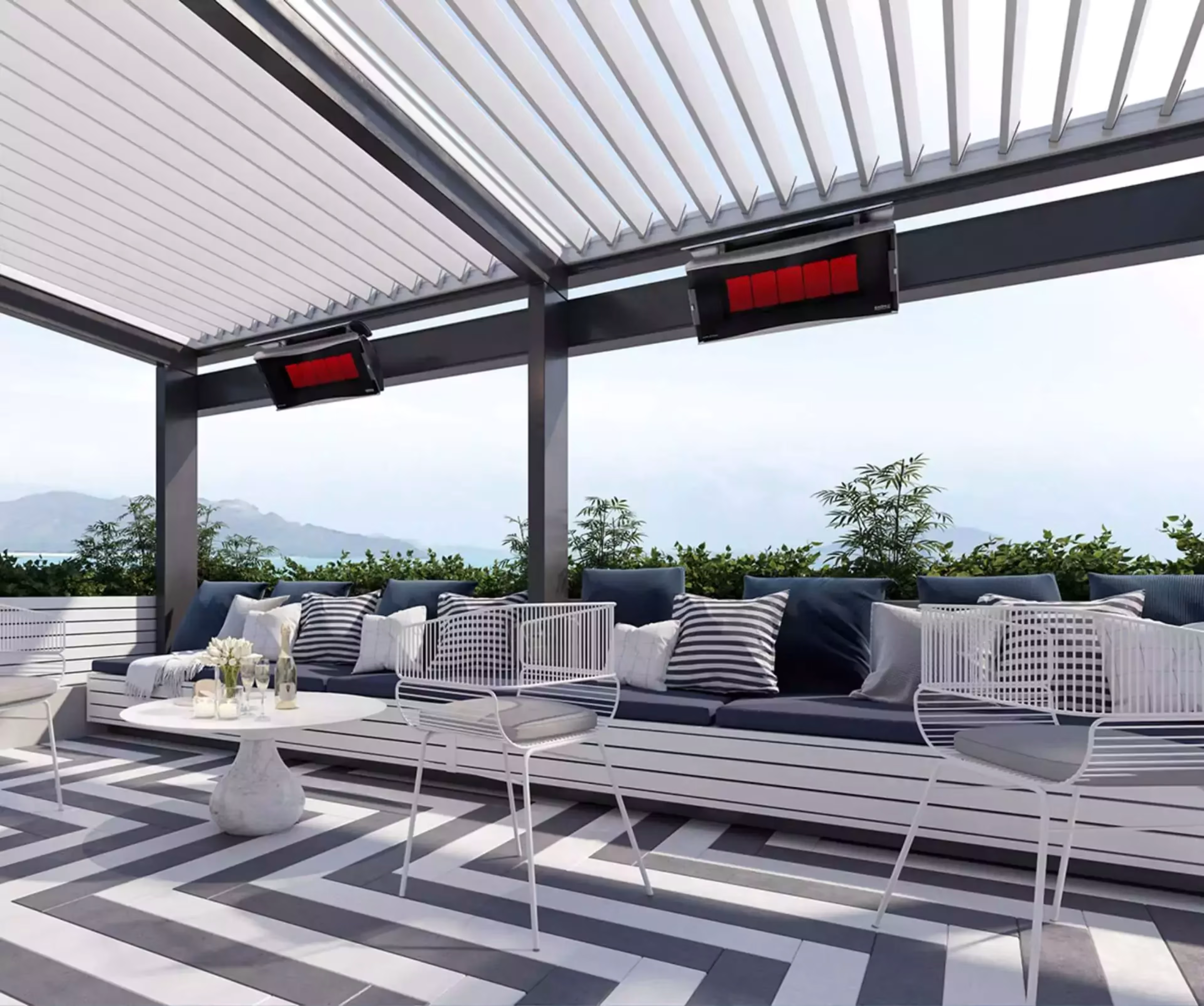
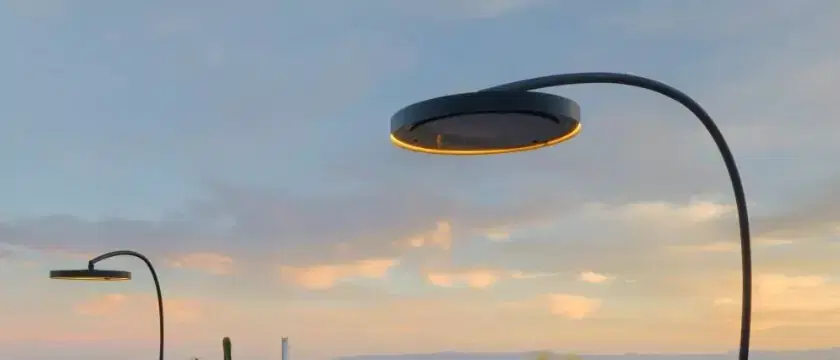

When you buy a patio heater, it’s essential to abide by manufacturer recommendations and talk to your electrician and, if your heater is gas, a plumber to ensure your space is appropriately equipped—before professionally installing anything.
Next, define your space; measure the dimensions and mounting heights of the area you want to heat. Outdoor areas are defined as at least 30% open (front, back, or side walls). If a patio is partially covered, it can trap heat and create a convectional heating effect.
You’ll also want to consider seasonal changes in your geography, proximity to wind and airflow, building codes, and whether the space in question is a new or existing construction.
As a rule of thumb, the higher the wattage, the more warmth (and less “glow”) you’ll get. Generally, the wattage and number of heaters needed will depend on your space’s height and square footage. You can use this simple equation to determine how many Watts you need to heat your space: Cubic feet of area x desired temperature rise = Watts needed.
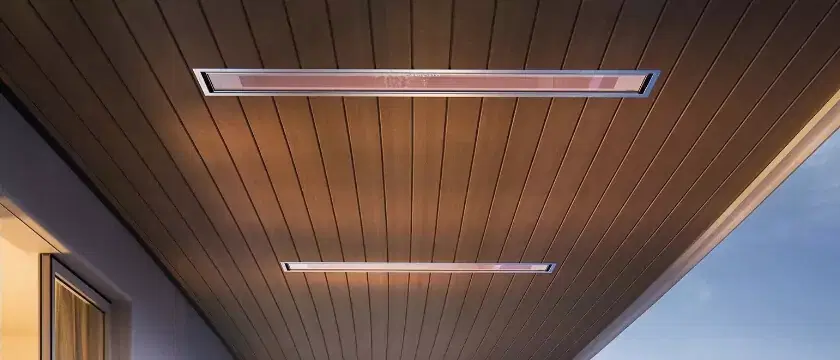
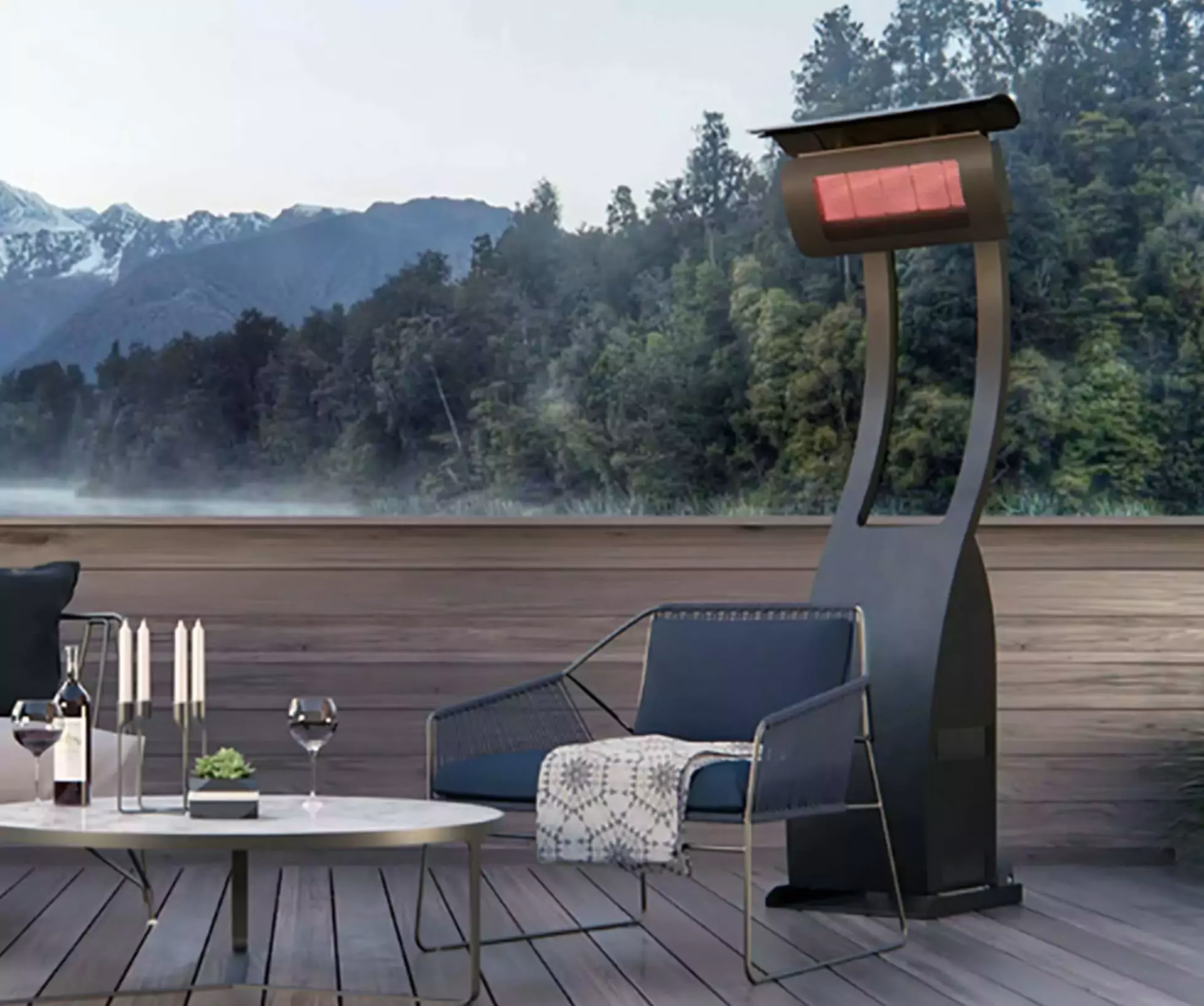
Freestanding heaters are generally portable and rarely ever require professional installation. Most freestanding heaters are available with wheels, allowing for easy portability.
Note: freestanding heaters hooked to a natural gas line are limited in mobility.
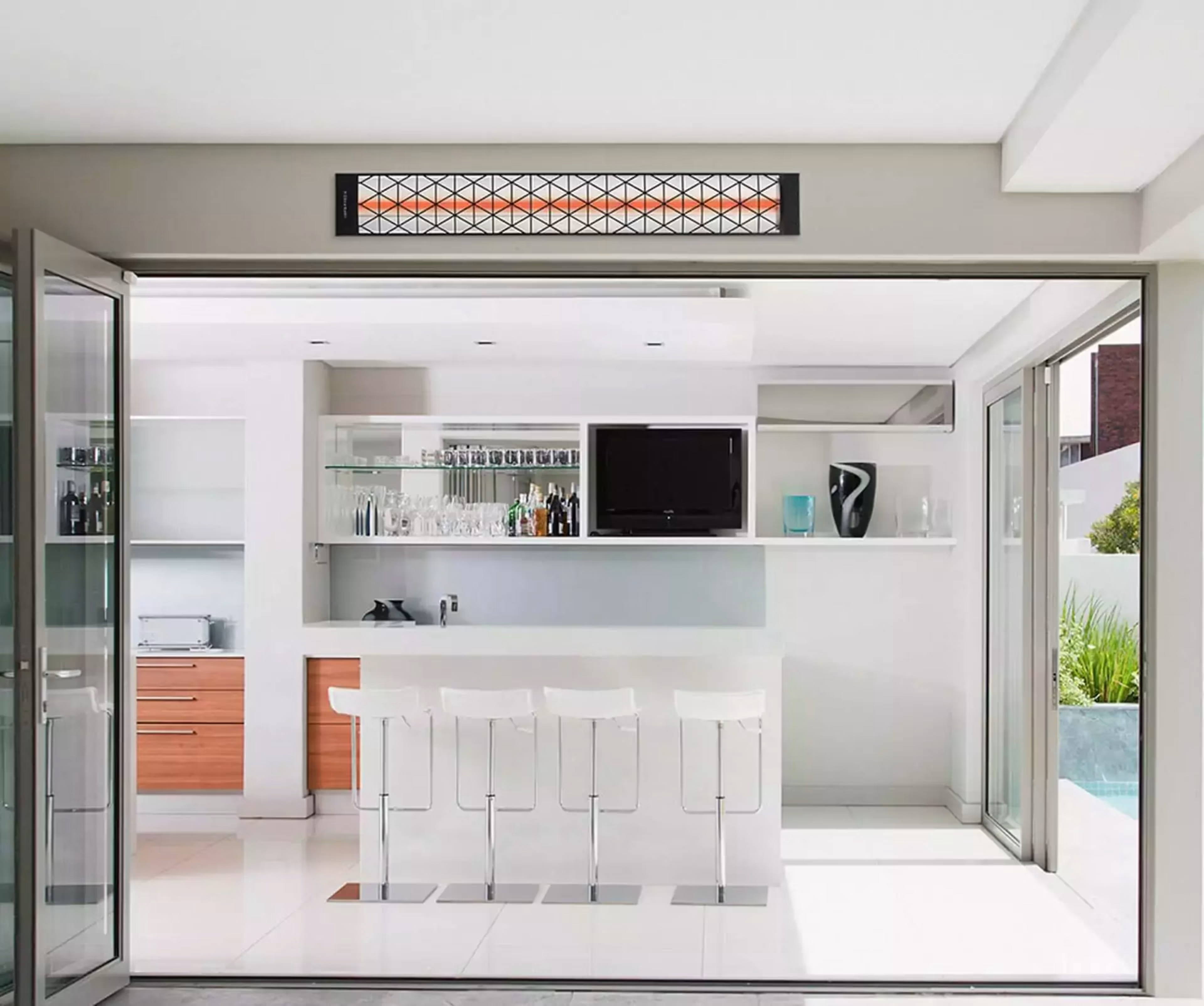
Mounted patio heaters require professional installation to ensure maximum heat output and safety. It’s essential to abide by manufacturer recommendations and talk to your electrician and (if you’re installing a gas heater) a plumber before beginning the installation process to make sure your breaker box can handle the wattage and amperage and electric pull of your patio heaters. For more information on choosing the correct wattage, see our What wattage should I choose?
Most heaters can be wall, ceiling, or pole mounted and generally all heaters can be exposed to the elements, although you should always consult manufacturer and model specifications to be sure.
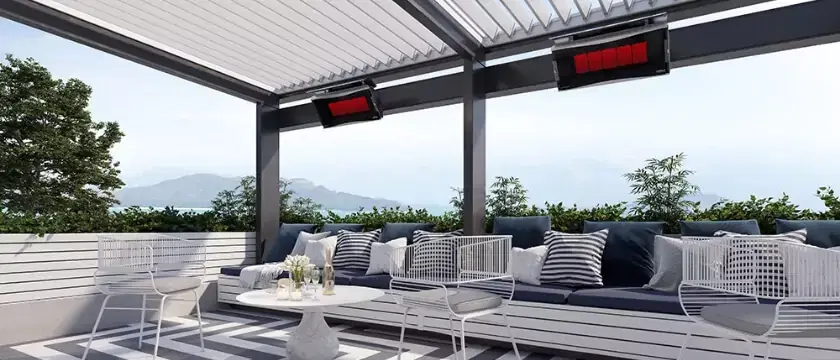
This depends on the size and shape of your area and how covered or uncovered your space is. Generally, it’s best to mount patio heaters in locations that will be occupied or where people gather, and place them on the outside facing in. Ideally, you’d install your heater from the direction of the cold airflow; this isn't always possible but is optimal, so the heaters don't have to work against the cold air.
You can also mount most heaters flush into the ceiling, creating a clean look. You’ll always want to make sure they’re at the proper distance from the floor and from each other based on their wattage and coverage area. For more information on this, see What wattage patio heater should I buy—and how many patio heaters does my space need?
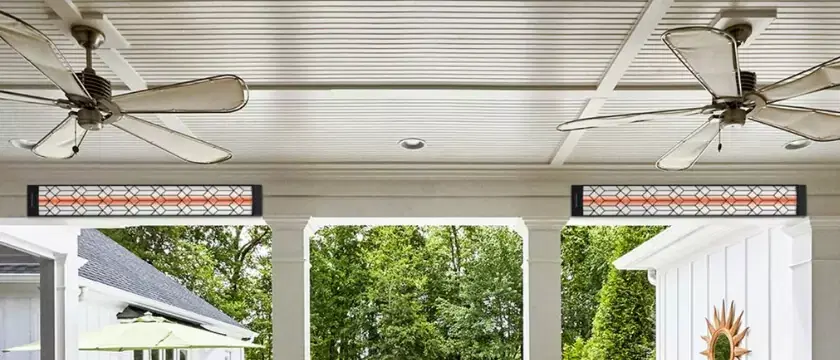
A licensed electrician can help guide you to the best solution for your home’s system. There are several types of switches and control panels to choose from.
A simple switch is a low-cost option over single-element electric heaters. A wide range of configuration options includes in-wall (for indoor, protected outdoor, or exposed outdoor areas) and surface mount for exposed outdoor areas. Weatherproof covers and boxes are available for any configuration to ensure safety and weather protection in your patio or backyard.
A simple stack switch is a low-cost control option for double-element heaters that offers seamless control, allowing you to enjoy your heater at full or half-power. Configuration options include in-wall (for indoor, protected outdoor, or exposed outdoor areas) and surface mount with a weatherproof box for exposed outdoor areas.
An input regulator offers more precise control over your single-element heater. When operating below full power, the regulator quietly cycles the heater on and off according to evenly timed intervals, allowing you to conserve energy while also maintaining optimal warmth. Each heater must have its own regulator, which includes in-wall (for indoor, protected outdoor, or exposed outdoor areas) and weatherproof surface mount configuration options.
For second homes or commercial spaces, custom panels—like a solid-state control panel, home management system, or a universal control package—are a great option. These allow you to create multiple heating zones and have timer functions that help maximize energy.
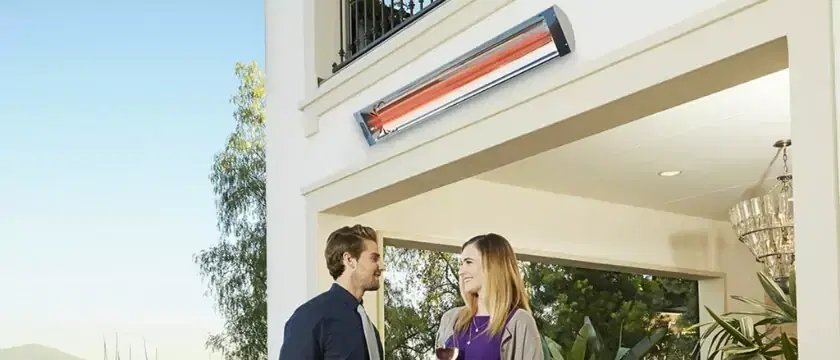
Always reference the manufacturer’s installation recommendations and suggested clearance, as well as the safety features of your patio heater. These can include heat shields, smart ignitions, safety switches, and timer turn-offs. Safety instructions and features vary by heater type and size, but you can always find them in the owner’s manual or website product page.

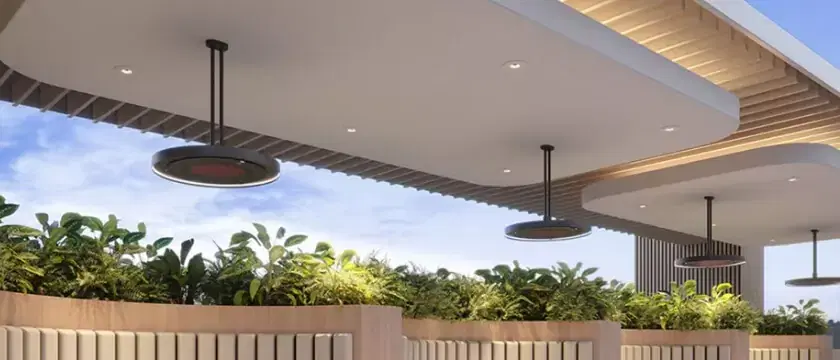
Shipping and lead times vary by product. Detailed and up-to-date shipping information is always available on each individual product page. For more information, read our comparison of Bromic vs Infratech, why we love Bromic heaters, and why we love Infratech heaters.
Life’s too short not to enjoy the outdoors throughout the seasons. With the right patio heater, your outdoor space can serve you (and your guests) all year long.
When it comes time to buy a patio heater, consult this patio heater buying guide to point you in the right direction.
If you have additional questions, our team of experts is available to assist. Send us an email at customercare@authenteak.com, chat with our team online or reach out by phone (866) 360-8325.
Categories
Recent Posts